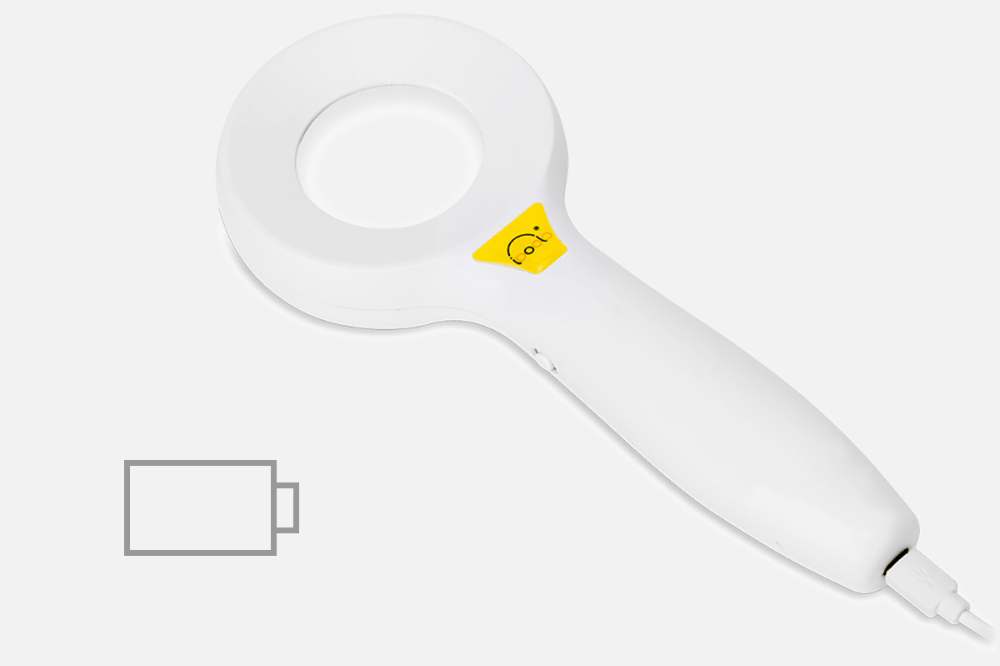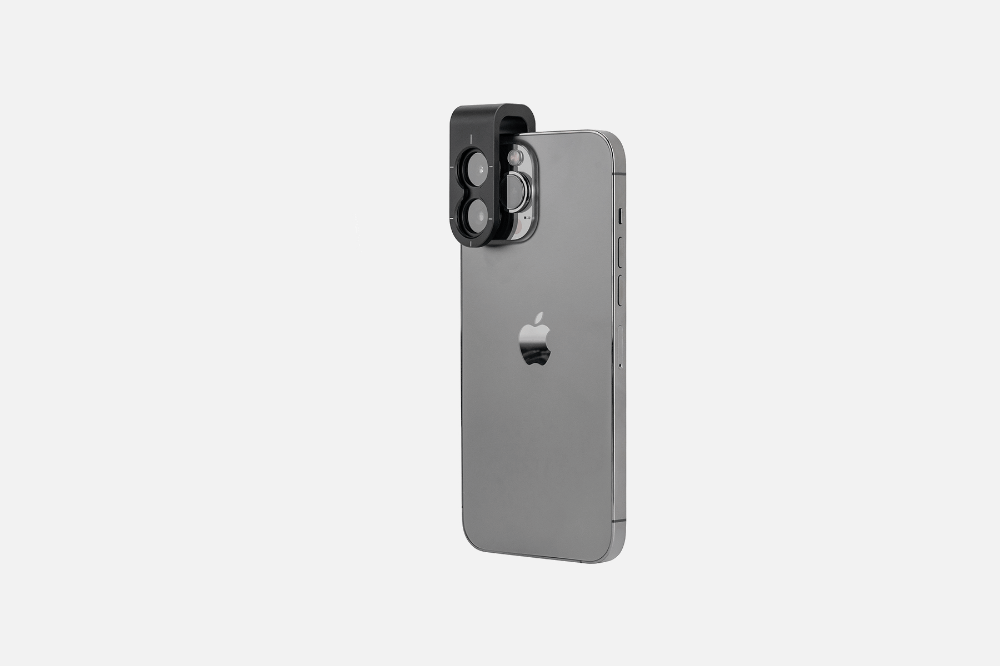Dermatology UV 365nm & 405nm DE-315 Woods Lamp
Dermatology UV 365nm & 405nm DE-315 Woods Lamp
- 4.5 x Magnification
- 60mm Lens Diameter
- 20 LEDs (10 UV 365nm, 10 Uv 405nm)
- 2 Types Colour Lighting
- Automatic shutdown
- Ultra long life battery
What It Has
- 365nm UV Light:A Wood's lamp has broadband light
sources that emit light at wavelengths between 320nm
and 400nm, with a peak at 365nm. - 405nm UV Light:Fluorescence Excitation
- 4.5X Magnification:Low distortion magnify
- 2000mAh Battery: Offering up to 6 hours long time and stable diagnosis.
In The Box
- DE-315 Woods Lamp
- USB Type-C Charging Cable
- Microfiber Cloth
- User Manual
Specs
- Lens Diameter:50mm
- Magnification:4.5X
- Ultraviolet Wavelength: 365nm & 405nm
- Radiation Intensity: 3.5 mW/cm2
- Battery Capacity:2000mAh
- Charging:USBType-C
- Working Time:2-6 hours
- Dimension:240mm*100mm*34mm(L*W*H)
Premier Woods Lamp Suppliers for Dermatology - IBOOLO
IBOOLO offers high-quality Woods Lamps for dermatological diagnosis. 365nm & 405nm UV, 4.5X magnification, 6-hour battery. Reliable suppliers for skin analysis.
Woods Lamp: A Comprehensive Guide for Dermatology Professionals and Suppliers
In the ever-evolving field of dermatology, the Woods Lamp stands out as a crucial diagnostic tool. This comprehensive guide explores the Woods Lamp, its applications in dermatology, and provides valuable information for both practitioners and Woods Lamp suppliers.
What is a Woods Lamp?
A wood lamp, a Wood Lamp or blacklight, is a diagnostic tool used in dermatology. It emits long-wavelength ultraviolet light (UV-A) in the 365 nanometer range, which can reveal features and conditions of the skin not visible under normal light.
Key Features of Woods Lamps:
1. UV-A light emission
2. Portable design
3. Long bulb life
4. Minimal heat production
5. Various sizes and models available
History and Development
The Woods Lamp was invented by physicist Robert Williams Wood in 1903. Initially used in physics experiments, its application in dermatology was discovered in the 1920s. Since then, it has become an indispensable tool in dermatological practices worldwide.
Applications in Dermatology
Woods Lamps have a wide range of applications in dermatology:
1. Pigmentation Disorders: Identifying conditions like vitiligo and melasma
2. Bacterial Infections: Detecting certain bacterial infections like erythrasma
3. Fungal Infections: Diagnosing fungal infections such as tinea capitis
4. Porphyria: Assessing porphyrin production in various types of porphyria
5. Sun Damage: Evaluating the extent of sun damage and pigmentation changes
6. Hair Disorders: Examining hair shafts for certain conditions
How Woods Lamps Work
Woods Lamps function by emitting UV-A light, which causes certain substances in the skin to fluoresce. Different conditions produce different colours of fluorescence:
- Bacterial infections: Coral red
- Fungal infections: Pale blue-green
- Porphyrins: Pink to orange-red
- Normal skin: Dull blue
Comparing Woods Lamps to Other Dermatological Tools
While Woods Lamps are valuable, they're often used in conjunction with other tools:
1. Handheld Dermatoscopes: Offer higher magnification and different light options
2. Digital Imaging Systems: Provide photographic documentation
3. Biopsy Tools: For definitive diagnosis of certain conditions
Choosing the Right Woods Lamp
When selecting a Woods Lamp, consider the following factors: Light intensity and wavelength accuracy, Portability and size, Durability and build quality, Additional features (e.g., magnification lenses), Price and warranty.
Woods Lamp Suppliers: Finding the Right Partner
Choosing the right Woods Lamp supplier is crucial for dermatology practices and medical facilities. Here are some factors to consider:
1. Product Range: Look for suppliers offering a variety of Woods Lamp models to suit different needs.
2. Quality Assurance: Ensure the supplier provides high-quality, certified products that meet medical standards.
3. Customer Support: Choose suppliers known for excellent customer service and technical support.
4. Pricing: Compare prices among different Woods Lamp suppliers, prioritising quality and reliability.
5. Warranty and Maintenance: Check the warranty terms and availability of maintenance services.
6. Reputation: Research the supplier's reputation in the medical community and read customer reviews.
Maintenance and Care of Woods Lamps
Proper maintenance ensures the longevity and effectiveness of your Woods Lamp: Clean the lamp regularly with appropriate disinfectants. Replace bulbs as recommended by the manufacturer, Store in a cool, dry place when not in use, Handle with care to prevent damage to the bulb or housing.
The Future of Woods Lamps in Dermatology
As technology advances, we can expect improvements in Woods Lamp technology: Integration with digital imaging systems, Enhanced spectral analysis capabilities, Combination with other diagnostic tools for comprehensive skin analysis.
The Woods Lamp remains a fundamental tool in dermatology, offering unique diagnostic capabilities. For dermatology professionals, understanding its applications and choosing the right Woods Lamp supplier is crucial for providing excellent patient care.
As the field of dermatology continues to evolve, the Woods Lamp is likely to remain an essential instrument, complementing newer technologies and techniques. By staying informed about advancements in Woods Lamp technology and maintaining relationships with reliable suppliers, dermatology practices can ensure they're always equipped with the best tools for skin diagnosis and treatment.
Whether you're a seasoned dermatologist, a medical facility manager, or a supplier in the dermatological equipment industry, understanding the importance and applications of Woods Lamps is crucial in today's healthcare landscape.
Recommended reading
Download CIBG Report – IBOOLO
Shenzhen Iboolo Optics Co.Ltd is a professional smartphone lens company, which is in the business of producing and marketing Dermatoscope, Microscope, Macro lens and Woods Lamp with 11+ years experience in China.
Return Policy – IBOOLO
Shenzhen Iboolo Optics Co.Ltd is a company who is specialized in the camera lens industry. IBOOLO is a professional manufacturer and exporter on Dermatoscope, Woods Lamp, Macro lens and Microscope in China.
Download Letter of Designation – IBOOLO
Shenzhen Iboolo Optics Co.Ltd established in 2012, with more than 11+ years. We have been specialized in the field of Woods Lamp, Macro lens, Microscope and Dermatoscope, and so on. We are a high-tech company integrated with research, manufacture and marketing.
Clinical Applications
The Wood's lamp is used to identify the extent of pigmented or depigmented patches and to detect fluorescence. Normal healthy skin is slightly blue but shows white spots where there is thickened skin, yellow where it is oily, and purple spots where it is dehydrated. Clothing lint often shines bright white.
What Makes it Unique
Woods lamps use ultraviolet light to reveal skin abnormalities that can’t be seen with human eyes. Build with 60mm field view and no cross-infection design, this Woods lamp can be held about 10-30 cm away from the skin for detection. The examination is painless and safe.
You might also like
-
DE-4100 PRO Dermatoscope
$799.00
-
DE-4100 Dermatoscope
$699.00
-
DE-3100 PRO Dermatoscope
$599.00
-
DE-3100 Dermatoscope
$499.00
Learn More
Medical Dermatoscopes
As a dermatologic diagnostic tool, dermoscopy is mainly used in dermatology to examine skin diseases, and can observe minute skin changes that are not detectable by the naked eye, helping…
Melanoma under Dermoscopy
Under dermoscopy, malignant melanoma can often be characterized by atypical pigment networks, irregular dot-ball shapes, and a bluish-white veil. For a clear view, the physician needs to clean the patient’s…
Dermatoscopes for Sale
As a non-invasive diagnostic tool, handheld dermatoscopes typically offer a magnification of around 10 times. Dermatoscopes are commonly equipped with built-in light sources to ensure adequate and even illumination during…











































